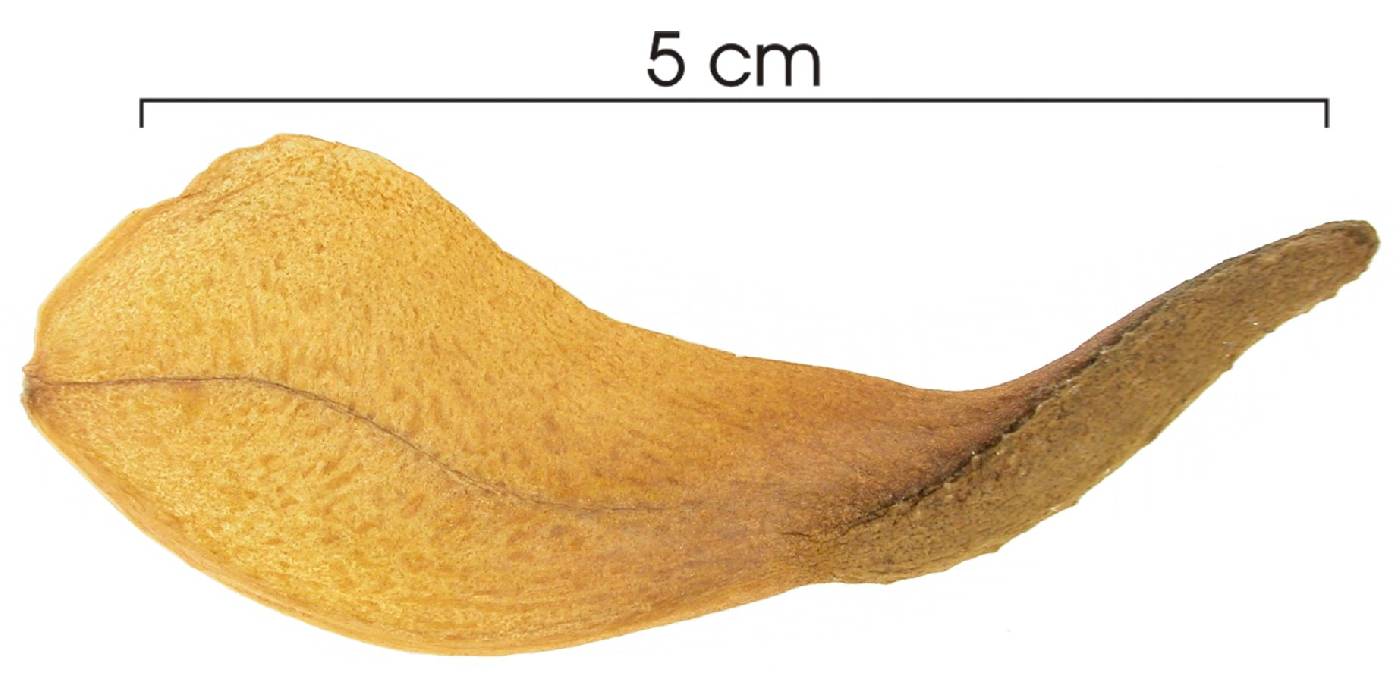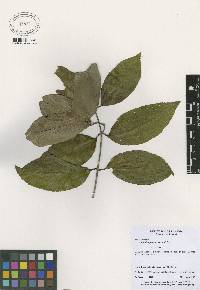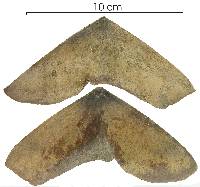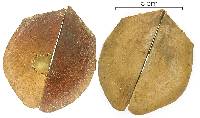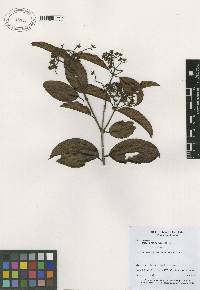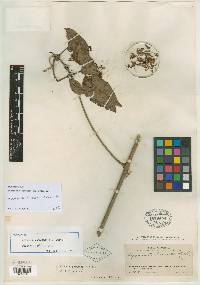

|
|
|
|
Family: Hippocrateaceae
|
Descripción: Plantas trepadoras o lianas con las ramitas terminales ligeramente cuadrangulares. Hojas simples y opuestas, de 5-13 x 3-6 cm, oblongas o elípticas, con ápice obtuso o acuminado, bordes aserrados o dentados y base redondeada a obtusa. Estípulas muy pequeñas y deciduas. Pecíolo de 0.5-0.8 cm de largo. Flores verde pálidas o amarillentas. Frutos en cápsulas trilobuladas y con tres mericarpos unidos, hasta de 15 cm de ancho. Semillas aladas, el ala obovada y de 2-2.5 cm de largo. Especies Parecidas: A menudo se confunde con LK hip2vo Hippocratea volubilis LK2 , pero en H. volubilis los tres mericarpos que forman el fruto se encuentran separados. Glabrous liana; stems terete (often faintly quadrangular on drying). Petioles 5-8 mm long; stipules lacking or inconspicuous and early deciduous; blades elliptic to oblong-elliptic, obtuse to acuminate at apex, obtuse to acute or rounded at base, 5-13.5 cm long, 2.5-5.7 cm wide. Inflorescences cymose, axillary or terminal, dichotomously branched, to 6 cm long; flowers greenish-yellow to olive-green, 10-12 mm diam, 5-parted; sepals semiorbicular, ca 1 mm long, broader than long; petals +/- ovate-lanceolate, 4-5 mm long, blunt at apex, serrate; disk prominent; stamens 3, ca 1.5 mm long, held closely against the 3-sided stigma; filaments flattened, broadened at base; anthers broadly reniform, broader than long, dehiscing by a transverse slit; ovary ovoid; style short, slightly shorter than stamens. Fruits trilobate, shallowly bowl-shaped, to 15 cm wide, pendent at maturity; mericarps 3, conspicuously flattened, rounded to emarginate at apex, connate 3-5 cm at their bases, dehiscing along a median suture to allow seeds to slowly drift out, the margins thin; seeds 10-14 per mericarp, thin-winged, ca 2 cm long and 2.5 cm wide including wings. Croat 11734, 12622. Occasional, in the canopy of the forest. Flowers most abundantly from July through August, but also from December to April. Fruit maturity time uncertain. Known only from Panama, from tropical moist forest on the Atlantic slope of the Canal Zone and in Bocas del Toro, Colón, and Darién. |

